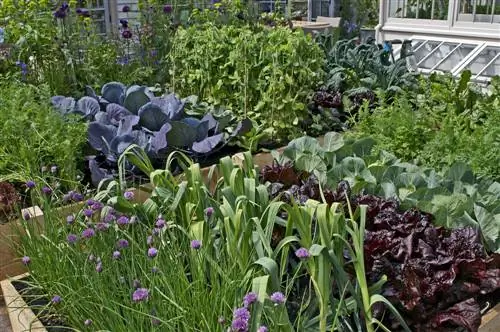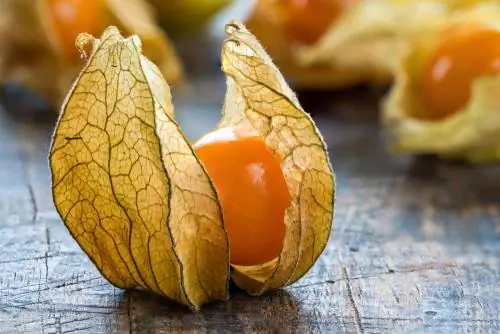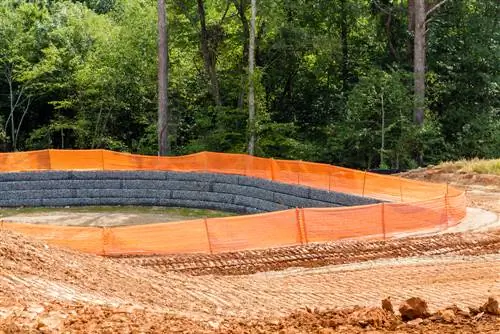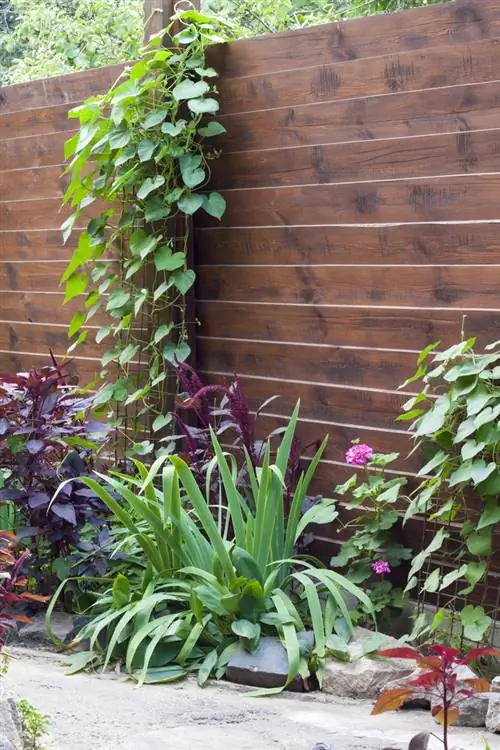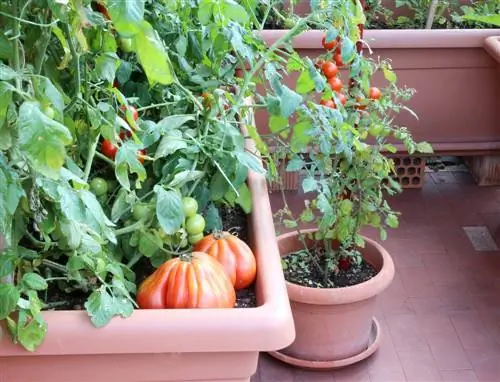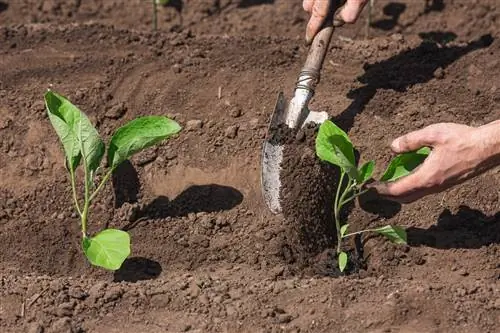- Author admin [email protected].
- Public 2023-12-16 16:46.
- Last modified 2025-06-01 06:02.
If you just want to grow a few tomatoes or cucumbers, perhaps strawberries and herbs, you can find space on every balcony, no matter how small. However, if the vegetable garden is used for self-sufficiency, possibly for a larger family, it must be significantly larger.

How big should a vegetable garden be per person?
For self-sufficiency with vegetables, you need at least 20 square meters of garden space per person. With abundant harvests and supplies of potatoes and stored vegetables, the requirement increases to 50 to 80 square meters per household member, excluding fruit trees.
Garden size depends on level of use and maintenance effort
The minimum size for a “real”, colorful vegetable garden is around 10 to 20 square meters, on which around four to eight beds can be created. However, at least 20 square meters per person are necessary if the majority of the vegetables required come from your own garden. If you are also aiming for lush strawberry or asparagus harvests as well as stocks of potatoes and stored vegetables, the space required per household member increases to at least 50 to around 80 square meters - this does not include fruit trees. When it comes to maintenance, you have to expect around 30 minutes of work per 10 square meters of vegetable space per week - during the planting and harvesting periods, the time required is of course significantly higher.
Area requirements of vegetables - This is how much space you need to plan for certain types
The table below gives you an overview of how many plants of a particular type of vegetable you can plant per square meter and how much yield you can expect from the subsequent harvest. When planning, keep in mind that some vegetables can be harvested multiple times. For this reason, the relevant information about the expected harvest is not the number of pieces, but the weight yield per square meter. You can use this table to calculate how big your garden needs to be after determining the vegetables you want and the number of plants.
| Type of vegetables | Area requirement: plants per square meter | Yield: pieces per square meter | Yield: kilograms per square meter |
|---|---|---|---|
| Kohlrabi | 8 to 16 | 8 to 16 | |
| Carrots | 80 to 120 | 80 to 120 | 2 to 3, 5 |
| Celery | 5 to 8 | 5 to 8 | 2 to 4 |
| Parsnip | 10 to 15 | 4 to 5 | |
| Radish | 120 to 150 | 120 to 150 | |
| Potatoes | 4 to 6 | 3 to 4 | |
| Onions | 100 to 120 | 100 to 120 | 3 to 6 |
| Leek | 25 to 35 | 25 to 35 | 2, 5 to 3 |
| pole beans | 15 to 18 | 2, 2 to 2, 8 | |
| Bush beans | 25 to 36 | 1, 2 to 1, 8 | |
| Peas | 78 to 80 | 3 to 4 | |
| pickling cucumbers | 5 to 10 | 2, 5 to 4 | |
| Tomatoes | 4 to 6 | 7 to 10 | |
| Zucchini | 1 to 2 | 4 to 6 | |
| Plucking lettuce | 10 to 16 | 1, 5 to 2 |
Tip
Steel tomatoes and runner beans produce higher yields than their bush-like relatives on the same area. This also applies to cucumbers and zucchini grown on trellises.

